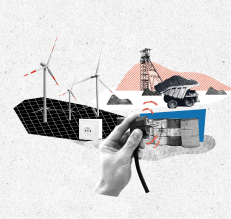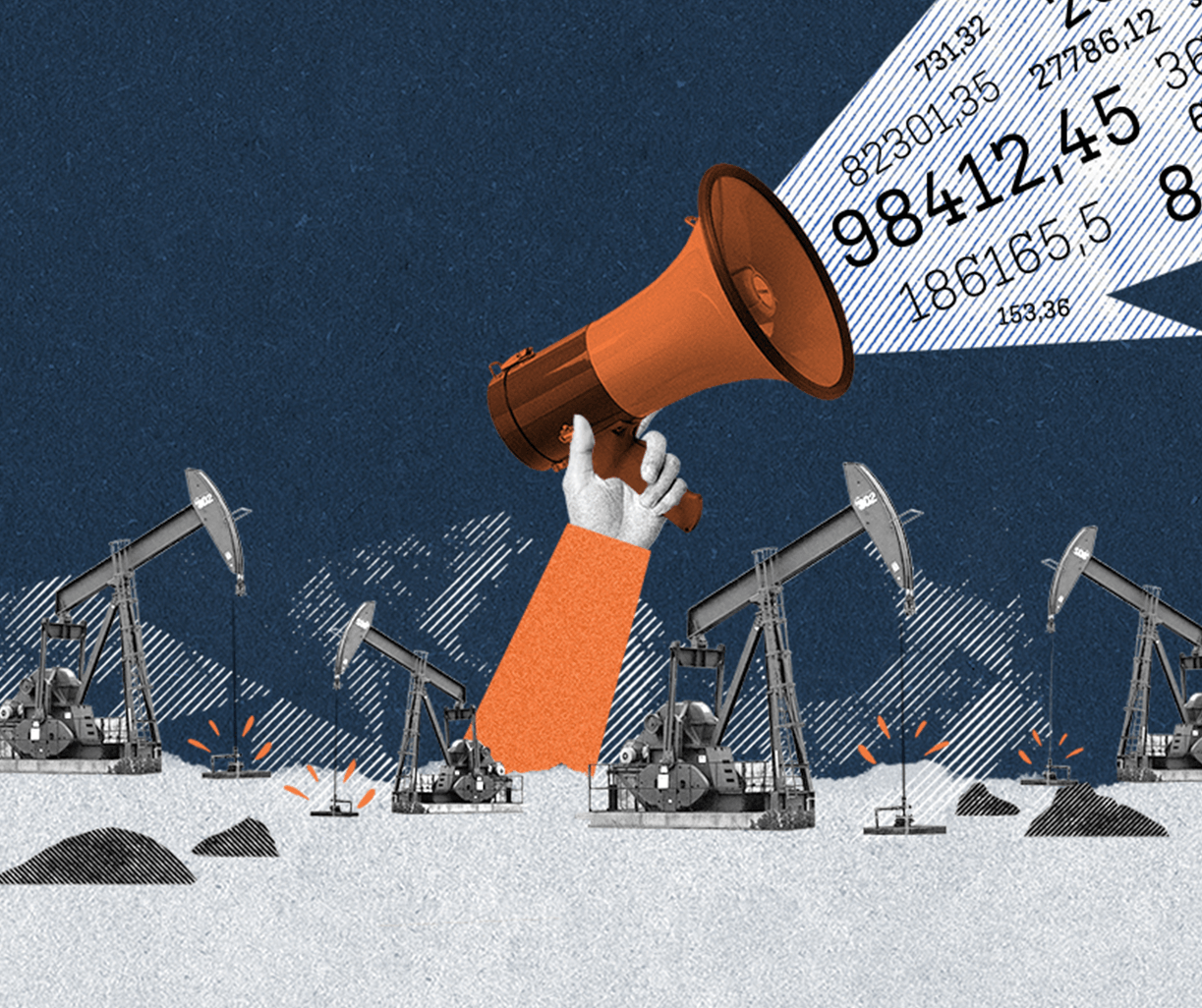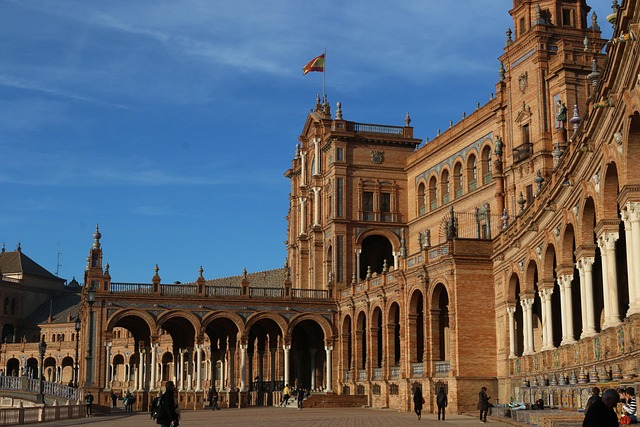The Arab region is undergoing a significant transformation in the field of energy, with a concerted effort to transition towards a sustainable energy system. Historically, the region has heavily relied on fossil fuels, notably oil and gas, which have driven its economic development over the past century. However, challenges such as declining fossil fuel reserves, price volatility, the impacts of climate change, and environmental concerns associated with fossil fuel usage have become pressing global issues. Consequently, countries in the region are reassessing their energy policies, aiming to shift towards cleaner energy sources, reduce dependence on fossil fuels, diversify their economies, and improve the living standards and well-being of Arab populations. This article examines the future of energy transition in the Arab region, highlighting the challenges and opportunities that lie ahead.
This post was written by Saleem Al-Aghbari, a member of PWYP Yemen, and originally published on the Transparency Coalition in Extractive Industries (TCEI). Read the original here.
The Arab Region and Renewable Energy
The Arab region boasts some of the world’s largest reserves of oil and gas, which have played a significant role in its economic growth and development. These resources have long been the backbone of the region’s economies, contributing vital support to infrastructure, education, and healthcare systems. However, despite the abundance of resources, many countries in the Arab region face significant challenges in the energy sector.
For instance, rapid population growth and urbanization in the region have led to increased demand for energy. According to the International Energy Agency (IEA), primary energy demand in the Arab region is expected to rise by 56% by 2040, with electricity demand expected to double. Excessive reliance on fossil fuels has also led to several challenges, including environmental degradation from greenhouse gas emissions and rising energy production costs. Additionally, recent fluctuations in oil prices have underscored the need for diversification and the development of alternative energy sources.
Renewable energy sources, which are renewable by nature and emit minimal pollutants, offer low-cost electricity options. According to the International Energy Agency, renewable energy facilities worldwide broke new records in 2021, continuing to rise by 8% in 2022.
The demand for primary energy in the Arab region is expected to increase by 56% by the year 2040, according to the International Energy Agency (IEA).
The Arab region is blessed with abundant renewable energy resources, particularly solar, wind, and hydropower, which are plentiful and becoming increasingly cost-effective. These resources have the potential to revolutionize the energy sector in the Arab world. Solar energy potential in the region is estimated at around 5000 terawatt-hours per year, while wind energy potential is approximately 50,000 megawatts. All of this makes the future of energy transition in the Arab region appear bright and full of opportunities.
Some Arab countries are seeking to increase their solar energy production through ambitious projects under the umbrella of Vision 2030. However, despite the abundance of renewable energy resources, their deployment in the region has been slow due to various challenges, including policy and regulatory barriers, funding shortages, and a lack of skilled labor.
The Arab World and Its Rich Renewable Energy Resources
The Arab world is incredibly rich in renewable energy resources, notably hydroelectric, solar, and wind energy. According to the Arab Forum for Environment and Development (AFED) report for 2011, the Arab region has a combined hydroelectric capacity of approximately 10.7 gigawatts, with large hydroelectric stations in Egypt and Iraq, and stations of various capacities in Algeria, Jordan, Lebanon, Mauritania, Morocco, Sudan, and Syria.
Regarding solar energy utilization, the Arab world possesses vast resources due to its unique geographical location, which grants it the highest solar irradiance. A significant portion of the region falls within the so-called “solar belt.”
In the realm of wind energy, Egypt and Jordan are among the most suitable countries in the region for harnessing this source. Wind speed averages around 11.8 meters per second in the Gulf of Suez in Egypt and 7.5 meters per second in Jordan.
The Kingdom of Saudi Arabia boasts an ideal geographic location for implementing solar energy projects, receiving 7 kilowatts per square meter per hour during the 12 daylight hours, significantly higher than sunny countries like Spain.
Yemen also holds high potential for generating energy through two important renewable sources: solar and wind. In 2022, Yemen signed agreements to implement renewable energy projects, including new solar energy projects, in several provinces.
This optimistic outlook indicates a promising future for solar energy in the Arab region. It opens avenues for Arab countries to keep pace with Europe and East Asia in solar energy projects, making them ideal nations for implementing solar energy projects to meet local demand and engage in retail sales.
All these factors reflect the high potential for solar energy generation in the Arab world, where solar energy sources range from 1460 to 3000 kilowatt-hours per square meter per year.
The Arab world possesses the highest solar irradiance, with a significant portion of it falling within what is known as the solar belt.
The region also holds high potential for wind energy generation, with Arab countries planning for more than 73 gigawatts of solar and wind energy projects on a facility scale, representing an increase of over five times the current capacity. Alongside operational projects, these will account for 91% of the Arab League’s renewable energy goals for 2030.
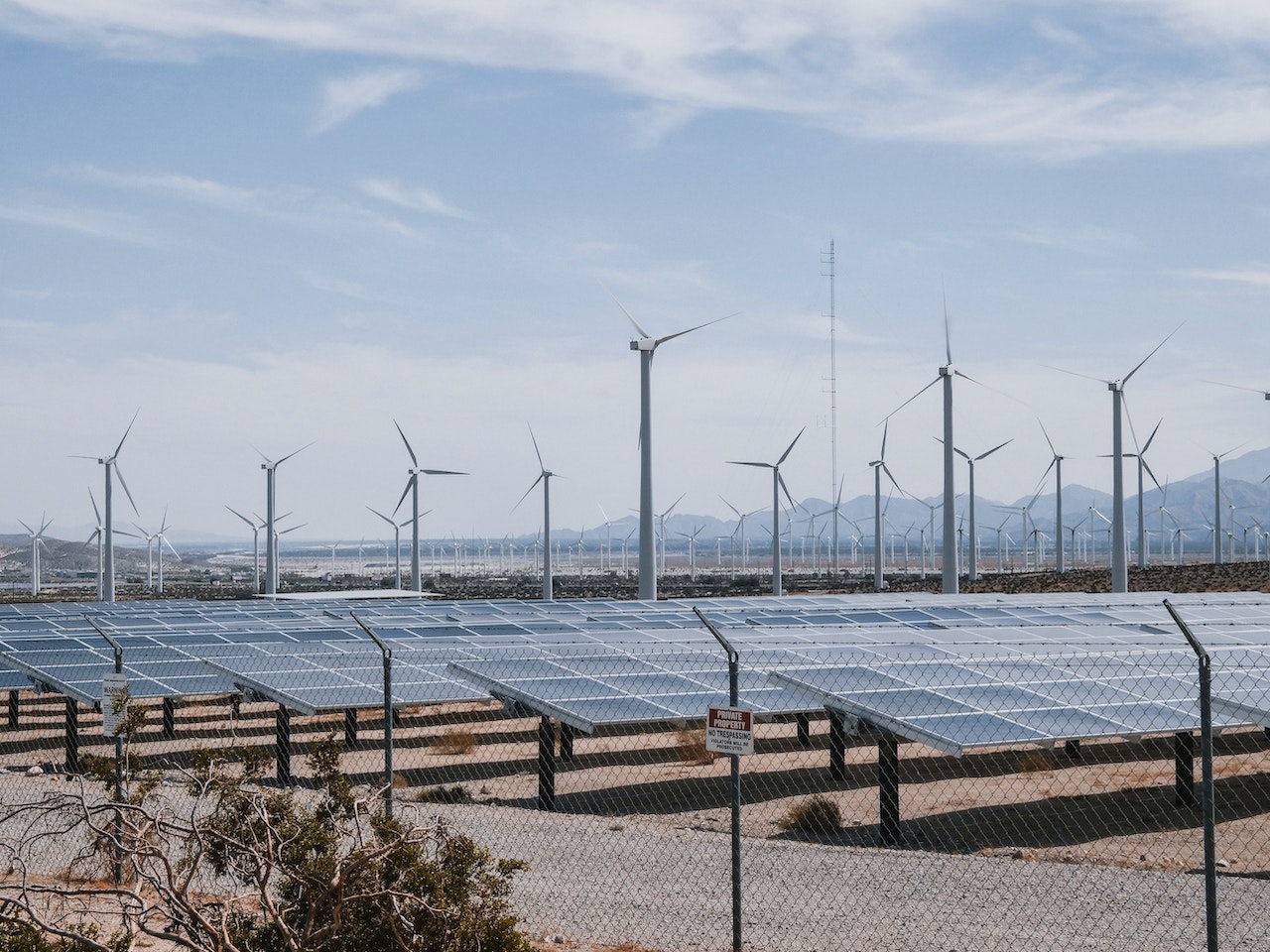
Some Arab countries have launched large-scale solar projects, such as Morocco, which constructed one of the world’s largest solar power stations at a cost of around $9 billion.
Thus, the region hosts some of the highest solar irradiance levels globally, providing an excellent opportunity for solar energy utilization.
Challenges of The Energy Transition in The Arab Region
With the growing momentum towards renewable energy, the Arab region faces numerous challenges in successfully transitioning towards the use of renewable energy sources. Despite the availability of renewable natural resources in the region, the utilization of renewable energy sources remains limited. It is essential to identify and address the factors hindering the further development of these sources in the region.
The transition to a low-carbon and sustainable energy system in the Arab region poses several challenges, including a lack of necessary funding and infrastructure, weak regulatory and institutional frameworks, heavy reliance on hydrocarbons as a primary source of energy and income, increasing energy demand, and susceptibility to external shocks such as oil price fluctuations. Additionally, there is a lack of awareness and participation, along with conflicts and crises, exacerbating the situation. Not to mention the increasing greenhouse gas emissions and the effects of climate change.
Political and regulatory barriers are among the challenges, as the lack of clear policies and regulatory systems to promote renewable energy represents a significant obstacle to its widespread adoption in the region. In many countries, fossil fuel subsidies are still in place, making it difficult for renewable energy to compete on a level playing field. Moreover, bureaucratic obstacles and a lack of political will have hindered the development of renewable energy projects.
The high cost of renewable energy projects and the lack of funding are among the primary challenges in the region.
The economies of the region rely heavily on the hydrocarbon sector, making the transition to renewable energy difficult without significant economic restructuring. Additionally, the high cost of renewable energy projects and funding shortages are major challenges in the region. While the cost of renewable energy has significantly decreased in recent years, it still requires substantial initial investments, which may be difficult to secure in countries with limited access to capital markets. Therefore, one of the major challenges is the high cost of renewable energy technologies compared to traditional fossil fuels. Despite the declining costs of renewable energy sources, they remain more expensive than traditional fossil fuels in many cases.
Furthermore, the lack of infrastructure and skilled labor is another challenge. Arab countries often lack the necessary infrastructure to support the transition to renewable energy. Electricity grids in the region are often old and ill-equipped to handle widespread renewable energy production. Governments in the region may also lack the technical expertise required to effectively implement renewable energy policies. Deploying renewable energy projects requires skilled labor, which is often lacking in the Arab region due to underinvestment in education and technical training programs, resulting in a shortage of qualified personnel for the installation, operation, and maintenance of renewable energy systems.
Technical and technological problems such as intermittency and storage remain major challenges with renewable energy sources such as solar and wind energy. This means that energy cannot be generated continuously, which may require backup energy sources. Additionally, there is a need for energy storage technologies to store excess energy generated during peak production times for use during low production times. The cost of these technologies remains high – any energy storage technologies – which poses a barrier to their deployment in the region.
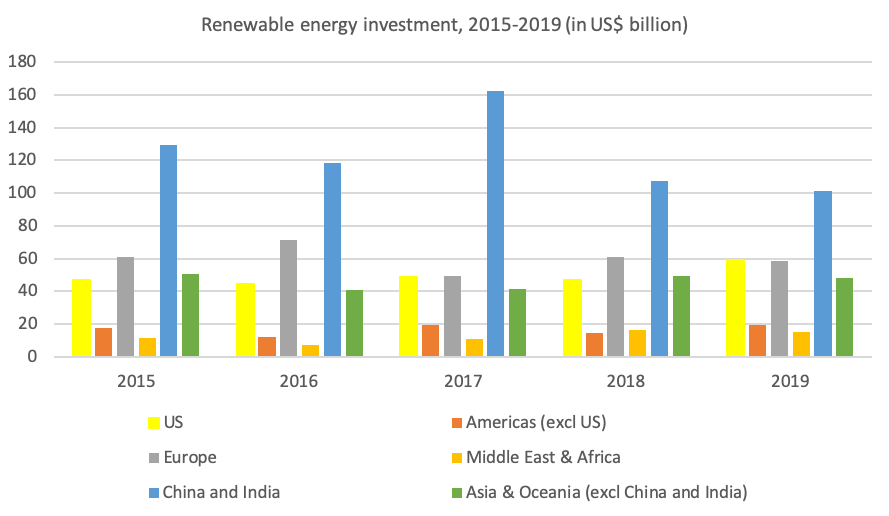
The investments in renewable energy according to geography_crop.
Between Fossil Fuel Crises and Renewable Energy Solutions
While the Arab region is home to approximately 9 oil and natural gas exporting countries, and Arab states account for about 25% of global oil production and around 15% of natural gas production, many countries in the region face energy crises related to fuel supply or electricity generation, stemming from either high prices due to supply shortages or weaknesses in local extraction and refining capabilities, as well as deficiencies in energy infrastructure networks and their limitations. The increasing energy demand in the Arab region poses a crisis resulting from efforts for economic and industrial development or as a natural consequence of excessive population growth and urban expansion. This naturally burdens Arab countries in several aspects, including providing energy sources (oil, gas, and their derivatives), and ensuring energy transmission networks, with growing pressure on existing networks. Renewable energy presents an important solution and alternative to energy problems and crises, as it can reduce the need for fossil fuels and alleviate the burden on existing energy transmission networks.
The Role of Regional Integration in The Arab Energy Transition
In the face of these challenges, regional integration plays a crucial role in the energy transition in the Arab region. Regional cooperation can help achieve energy security, improve the efficiency of natural resource utilization, and utilize their financial returns in sustainable development processes.
The opportunities available for regional integration include issues of energy and water supply within the region. These areas will benefit from advanced dialogue, fundamental technical work, and the promise of achieving strong positive economic impacts in the very near future.
Currently, the development of the Arab electricity market is underway, aiming to increase cross-border electricity trade from the current 2% to 40% by 2035. This project will provide the region with one of the largest integrated and multi-country energy networks in the world.
Crossroads
The Arab region stands at a crossroads towards its energy transformation, with significant challenges and opportunities in the future. The abundant renewable energy resources in the region provide a pathway to a low-carbon and sustainable energy system, but harnessing these resources requires overcoming political, regulatory, financial, and technological challenges.
Successful deployment of renewable energy in the region will require coordinated efforts by governments, companies, civil society, and donor entities to develop policies, financing mechanisms, and necessary technical capabilities. Policy solutions to address these challenges include supporting research and innovation, reforming the electricity sector, promoting public-private partnerships, increasing regional integration, and enhancing education and awareness.
Despite the challenges, the benefits of a sustainable energy system, including environmental sustainability, energy security, and economic development, make the transition to renewable energy a vital priority for the Arab region.
References:
[1]Broom, D., (Jun 17, 2022), These 4 charts show the state of renewable energy in 2022, World Economic Forum
[9]Sim, Li-Chen, (Feb 8, 2022), Renewable power policies in the Arab Gulf states, Middle East Institute
[3]ما هو مستقبل الطاقة الشمسية في المنطقة العربية؟ [فيديو]، يوتيوب، (Feb 18, 2022)
[4]الطاقه الشمسية في المملكة العربية السعودية مستقبل واعد، أتاريك (Aug 18, 2022)
[7]مستقبل الطاقة الشمسية في المملكة العربية السعودية، مجلة القافلة
[8]معلومات عن أكبر محطة طاقة شمسية في اليمن، طاقة (Dec 22. 2022)
